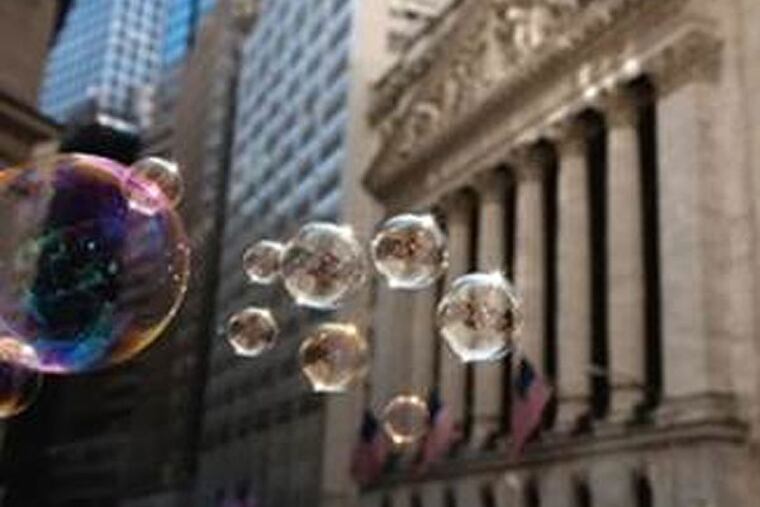Has the Fed been fueling bubbles?
WASHINGTON - The Federal Reserve's super-low interest-rate policies have inflated a slew of dangerous asset bubbles. Or so critics say.

WASHINGTON - The Federal Reserve's super-low interest-rate policies have inflated a slew of dangerous asset bubbles. Or so critics say.
They say stocks are at unsustainable prices. California homes are fetching frothy sums. Same with farmland.
Supporters say low rates have helped nourish the still-modest economic rebound.
Yet some say the Fed-engineered rates have produced an economic sugar high that risks triggering a crash akin to the tech-stock swoon in 2000 and the housing bust in 2006.
As the Fed's latest policy meeting gets underway, here's why - or why not - these assets might be in a bubble:
Stocks. The Standard & Poor's 500 stock index has jumped about 26 percent since the Fed announced a year ago that it would buy $85 billion in bonds each month.
Why it's a bubble: By artificially depressing bond yields, the Fed has led more investors to shift money into stocks. Once the Fed unwinds its support, many investors could abandon stocks and send shares tumbling. "I am most worried about the boom in the U.S. stock market" because of its disconnect from a "weak and vulnerable" economy, Robert Shiller, the Nobel Prize-winning Yale economist, told the German magazine Der Spiegel a few weeks ago.
Why it isn't: One key measure assesses stock prices relative to corporate profits. A healthy price-earnings ratio is around 15 - or $15 a share for each dollar of profit. The current P/E ratio is about 18.4, slightly above average but probably no cause to panic. Janet Yellen, nominated to succeed Bernanke, said last month: "If you look at traditional valuation measures . . . you would not see stock prices in territory that suggests bubble-like conditions."
Housing. Why it's a bubble: Fitch Ratings estimated in November that a worrisome 17 percent of the U.S. home market is overvalued, a risk because much of the buying is tied to investments and house-flipping. Some leading forecasters have also warned of bubbles in London and areas of Canada and Norway. New York University economist Nouriel Roubini worries about bubbles in Switzerland, France, India, Indonesia, Turkey, Israel and Brazil.
Why it isn't: At least in the United States, some safety valves are in place that didn't exist during the previous housing bubble, Roubini wrote this month. Lending standards are tighter. Banks are cushioned from possible losses from greater capital in reserve. And homeowners have more home equity this time.
Farmland. Over the past five years, the cost of farmland has more than doubled in Iowa, Kansas, Nebraska and North Dakota.
Why it's a bubble: The Fed's low-rate policies have encouraged farmers to expand their holdings. Ethanol subsidies led them to plant more corn as prices for that crop rose during the last three years. Now, the Environmental Protection Agency has proposed cutting ethanol blending requirements.
Why it isn't: Farmers haven't become "over-leveraged" with debt, Esther George, president of the Kansas City Fed, noted last summer. The percentage of farmers' assets financed with borrowed money has dropped from 22 percent in 1985 to less than 11 percent.